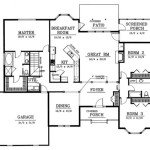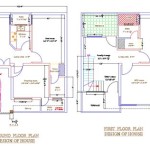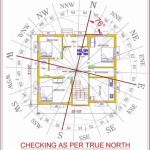Title: Well House Cover Plans: Securing and Beautifying Your Water Source
### Introduction: A well house, often referred to as a pump house or wellhead protector, is a crucial structure that serves as a protective enclosure for your well. It safeguards the well from external elements, prevents contamination, and provides easy access for maintenance. To ensure the longevity and functionality of your well house, it's essential to have a well-designed cover plan in place. In this comprehensive article, we'll delve into the importance of well house cover plans, explore different types of covers, and guide you through the steps involved in creating a customized cover plan. ### Significance of Well House Cover Plans: 1.Protection from Elements:
Well house covers effectively shield the well from harsh weather conditions such as heavy rain, snow, and strong winds. This protection prevents damage to the wellhead and internal components, extending the lifespan of the well system. 2.Prevention of Contamination:
A well house cover acts as a barrier against contaminants like dirt, debris, insects, and animals. It minimizes the risk of contamination, ensuring the quality and safety of the water supply. 3.Enhanced Security:
Well house covers provide an additional layer of security by restricting unauthorized access to the well. This added protection helps prevent tampering and potential vandalism. 4.Ease of Maintenance:
Well house covers facilitate easy access for routine maintenance and repairs. By providing a dedicated space for well equipment, maintenance personnel can efficiently perform inspections, check water levels, and make necessary adjustments. ### Types of Well House Covers: 1.Gable Covers:
Gable covers are the most common type of well house covers. They feature a pitched roof design that allows for proper water drainage and ventilation. Gable covers are available in various sizes and materials to suit diverse well house designs. 2.Hip Covers:
Hip covers have a four-sided, pyramid-shaped roof design. These covers offer enhanced protection against rain and wind and provide a more finished look to the well house. Hip covers are often preferred for aesthetic reasons. 3.Flat Covers:
Flat covers are a simple and economical option for well houses. They consist of a flat roof panel supported by a frame. Flat covers provide basic protection and are suitable for regions with mild climates. 4.Custom Covers:
Custom covers are designed to meet specific requirements and preferences. They can be fabricated in various shapes, sizes, and materials to match the architectural style of the property and surrounding landscape. ### Creating a Customized Well House Cover Plan: 1.Assess Your Needs:
Before creating a cover plan, assess your specific needs and requirements. Consider factors such as the size and location of the well house, the climate conditions in your area, and your desired level of protection and aesthetics. 2.Choose the Right Cover Type:
Select the type of cover that best suits your needs and preferences. Gable covers are a popular choice for their functionality and aesthetics, while hip covers provide enhanced protection and a more finished look. Flat covers are a simple and cost-effective option for mild climates. 3.Determine the Cover Dimensions:
Measure the dimensions of your well house opening to determine the appropriate cover size. Ensure that the cover extends slightly beyond the edges of the opening to provide adequate protection. 4.Select the Material:
Choose the material for your well house cover based on durability, weather resistance, and aesthetic appeal. Common materials include metal, fiberglass, and wood. Metal covers are durable and long-lasting, fiberglass covers are lightweight and corrosion-resistant, while wood covers offer a natural look. 5.Consider Ventilation:
Incorporate ventilation into your cover design to prevent condensation buildup and ensure proper airflow. Ventilation openings can be incorporated into the cover or installed separately. 6.Finalize the Design:
Finalize the design of your well house cover, taking into account all the factors discussed above. Ensure that the cover complements the overall aesthetics of your property. ### Conclusion: Well house cover plans are essential for protecting your well from the elements, preventing contamination, and providing ease of maintenance. By following the steps outlined in this article, you can create a customized well house cover plan that meets your specific needs and preferences. A well-designed cover ensures the safety and longevity of your well while enhancing the overall appearance of your property. Remember to consult with professionals or building experts if you require assistance in designing or installing your well house cover.
Precious Build Pump House 419759 Home Design Ideas Water Well Cover

Wishwellreading2 130k Water Well House Pump

Insulated Pump House

Diy Well House

Pump House For Well Plans Water

Pump House Sheds Http Howardwatersystems Com Need 20to 20know Water Well Shed Plans

Pump House Well Water

7 Pump House Ideas Water Well Shed

Well House Design

Botanic Bleu Well House To Tool Shed Exterior Before








